Joe Daniels: Kimbe Bay
Kimbe Bay lies on the north side of New Britain fringed by a undulating landscape of volcanoes and forest. Due the regions volatile geology the island straddles two tectonic plates causing the shelf of the island to plunge into fathomless depths. Within the bay there are many sea mounts, underwater mountains that barley reach 30m/100ft beneath the surface and some that are exposed at low tides. All are covered in dense and diverse hard coral gardens. Scientific journals vary slightly on the exact species number, but its around 536 types of coral which is more than half the world’s species. The mass bleaching events on the (relatively) close by Great Barrier Reef have been a real concern for the reefs around Kimbe. Although there is evidence of bleaching here, it is nothing like the large scale events seen else where. The remote location and low anthropogenic impacts on the area have given the corals an extra resilience against rising sea temperatures.
Fishing here is minimal, generally just subsistence fishing from the small villages that are dotted along the coastline. Healthy populations of predatory species like Groupers and Snappers are highly abundant. The fish species count here is around 900, one of the highest on the planet.
Kimbe Bay is a very special place, the remarkable marine biodiversity and low numbers of divers make this a underwater photographers paradise. A special thanks to everyone at Walindi Plantation Resort as well as Alan, Josie, Digger and all the staff/crew on the MV FeBrina.
Find more of Joe’s work here.
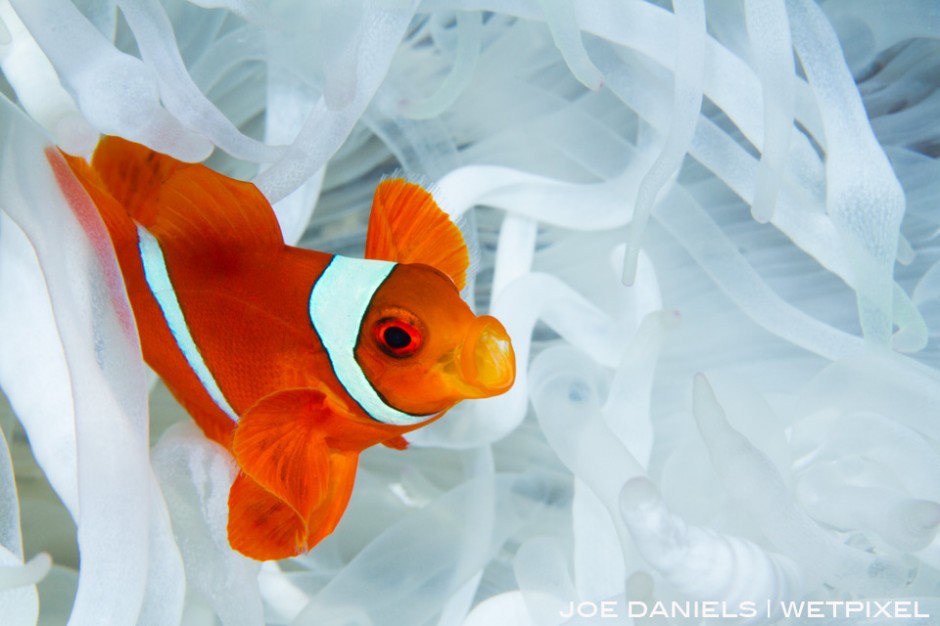
A Spine Cheek Anemone fish nestled in its host anemone.
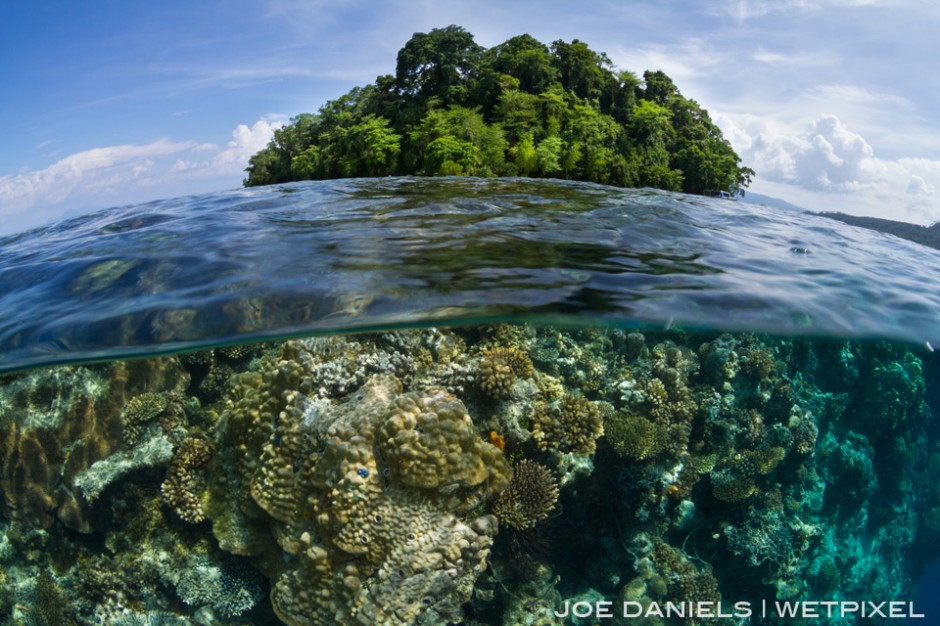
A large fringing reef surrounds Restorf Island providing incredible split level opportunities.
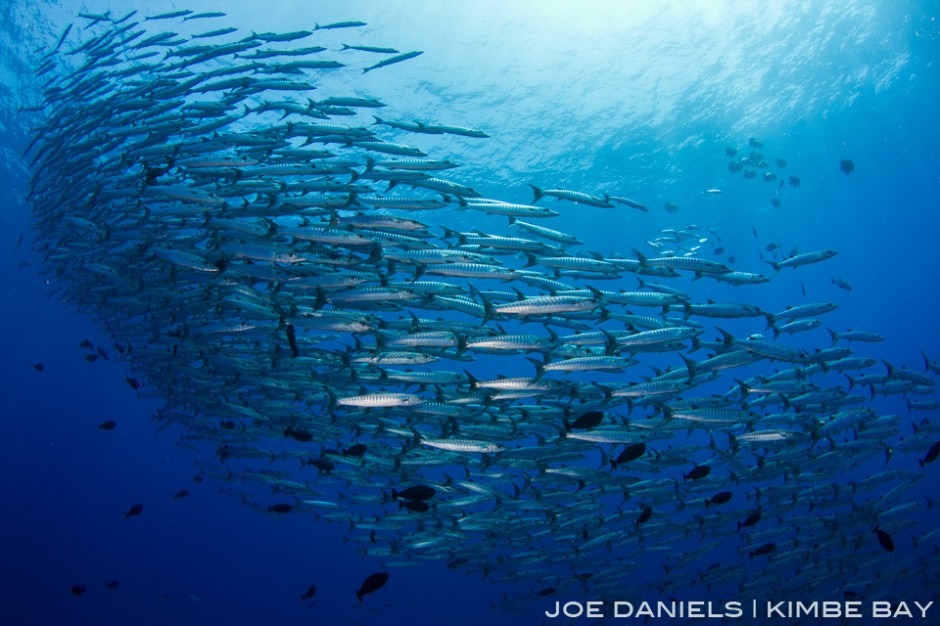
Bradford Shoal is home to a emmense school of Chevron Barracuda.
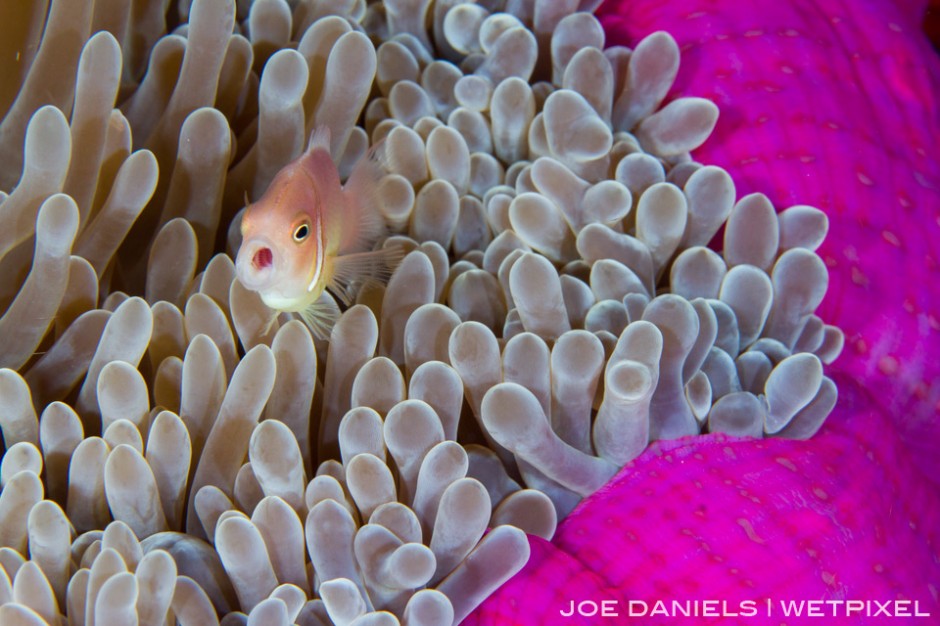
Magnificent Anemone's are a common sight around Kimbe Bay.
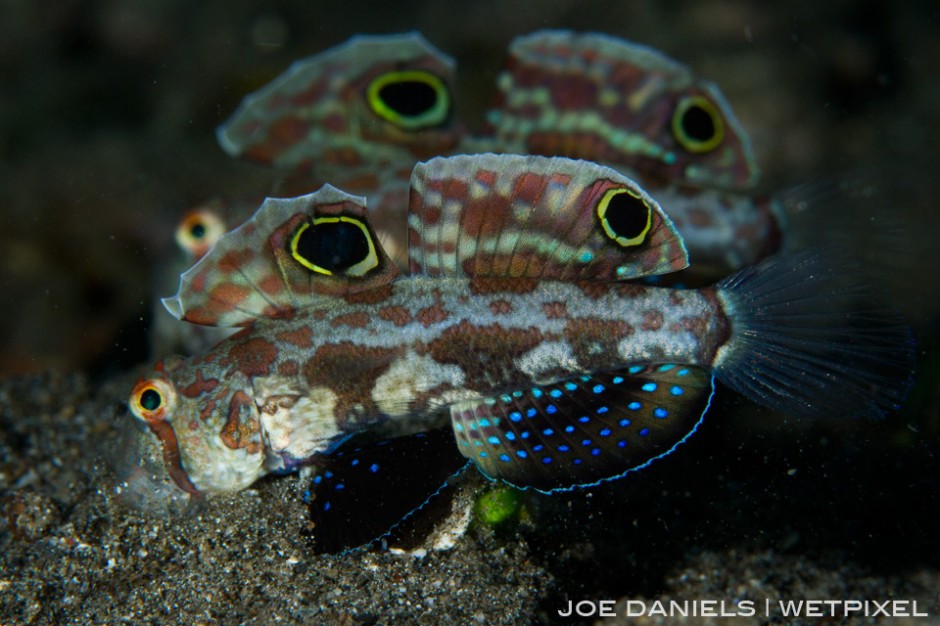
The Witu Islands host some world class muck diving. This pair of Twinspot Gobies were found on one of the black sand slopes.
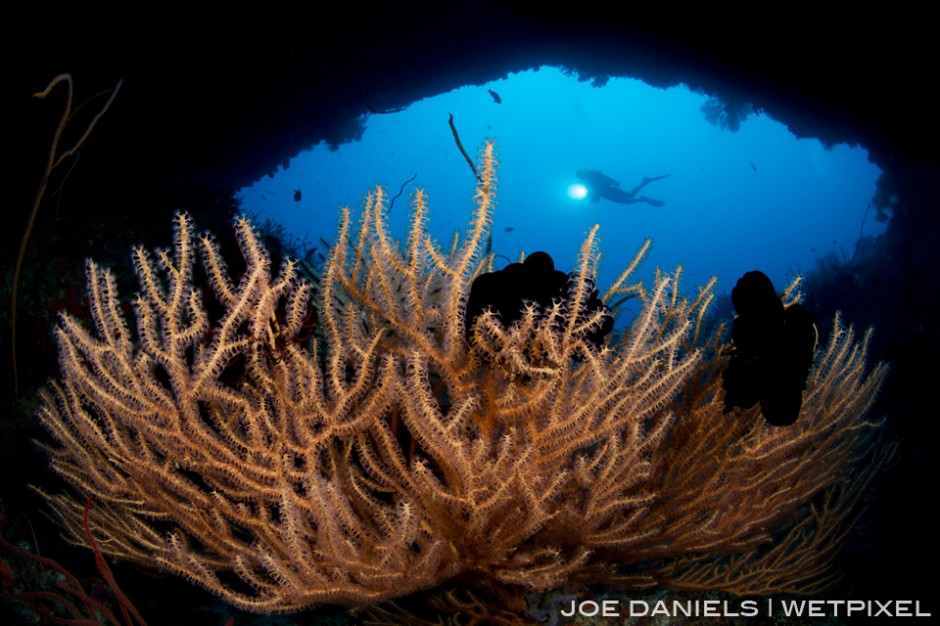
A diver explores a underwater cave off the Witu Islands.
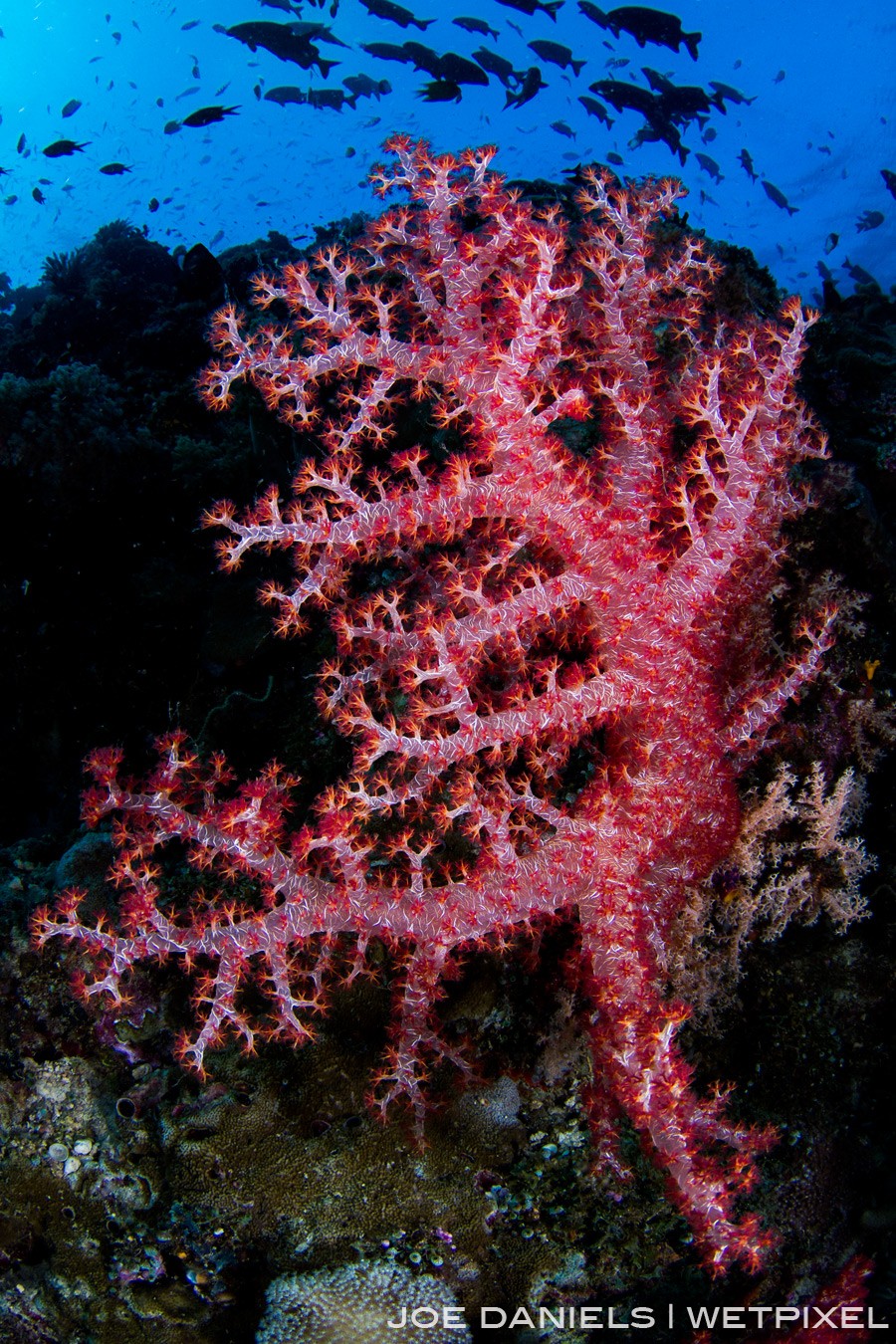
Reefs around the Witu Islands are festooned with vibrant Dendronepthia soft corals.
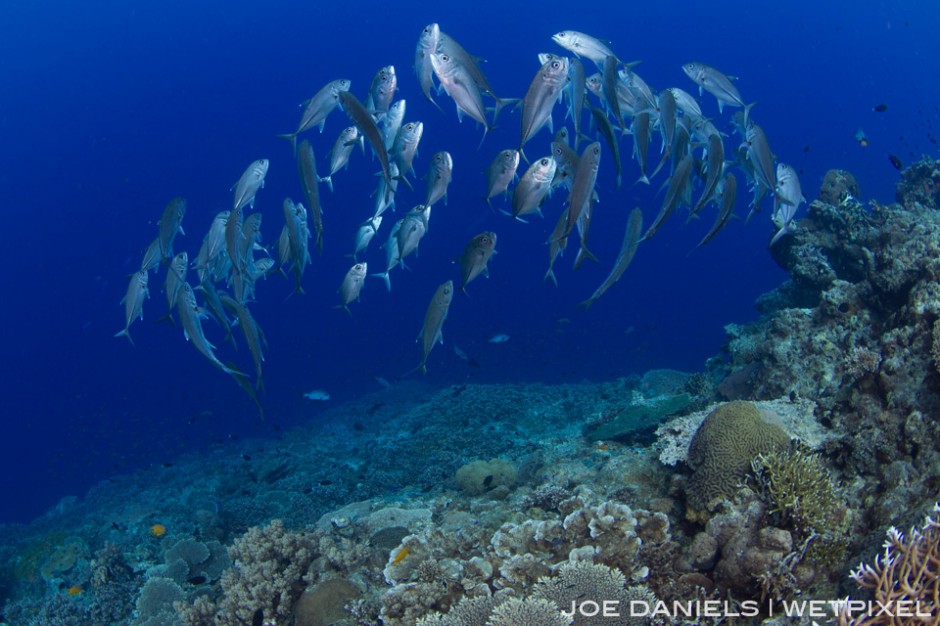
Schooling big eye jacks inhabit many of the sea mounts around Kimbe Bay.
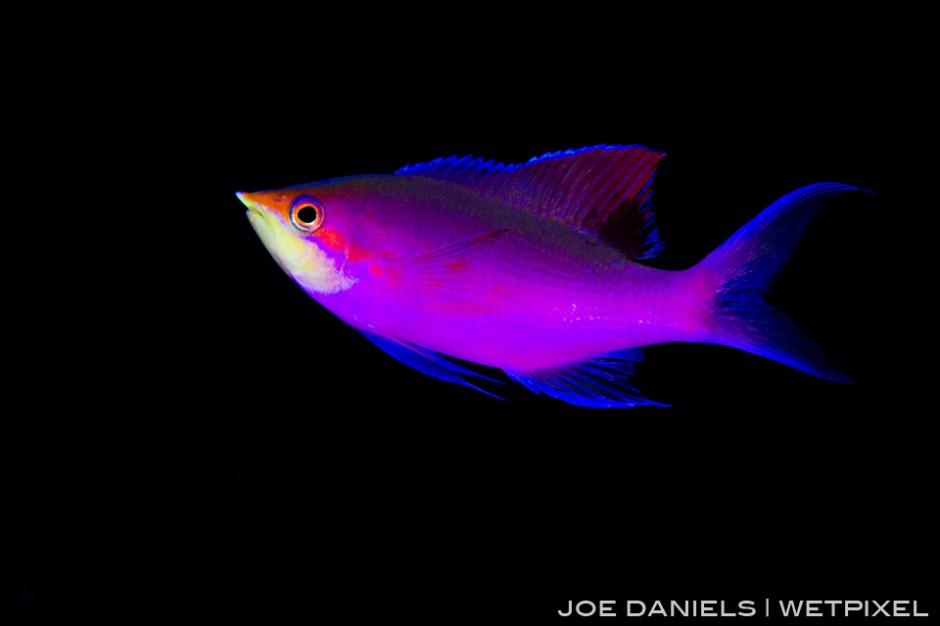
Purple, Yellow striped anthias (Pseudanthias tuka) cover the reefs around Kimbe Bay.
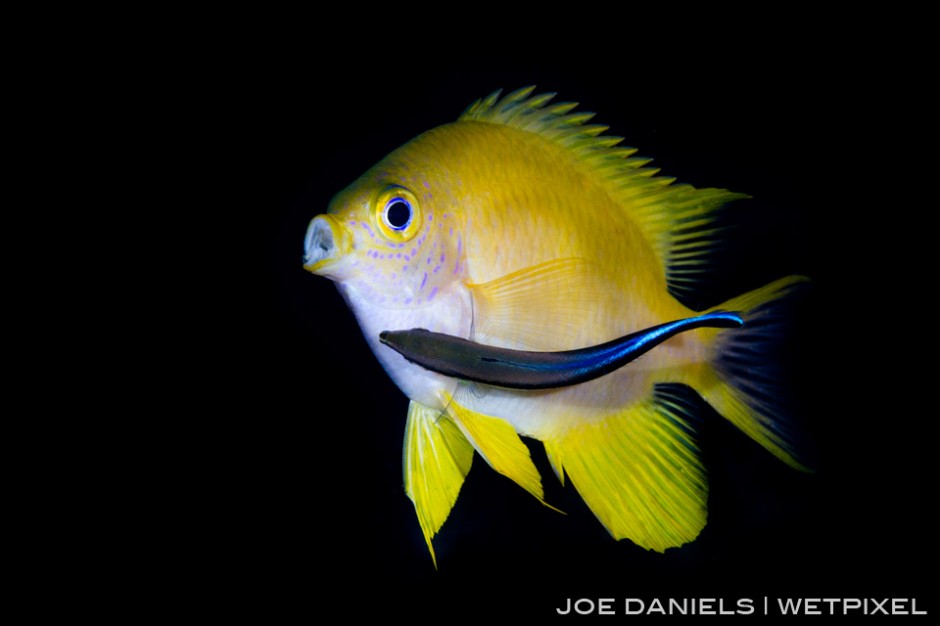
A golden damselfish (Amblyglyphidodon aureus) being cleaned by a bluestreak cleaner Wrasse (Labroides dimidiatus) on Fathers Reef.
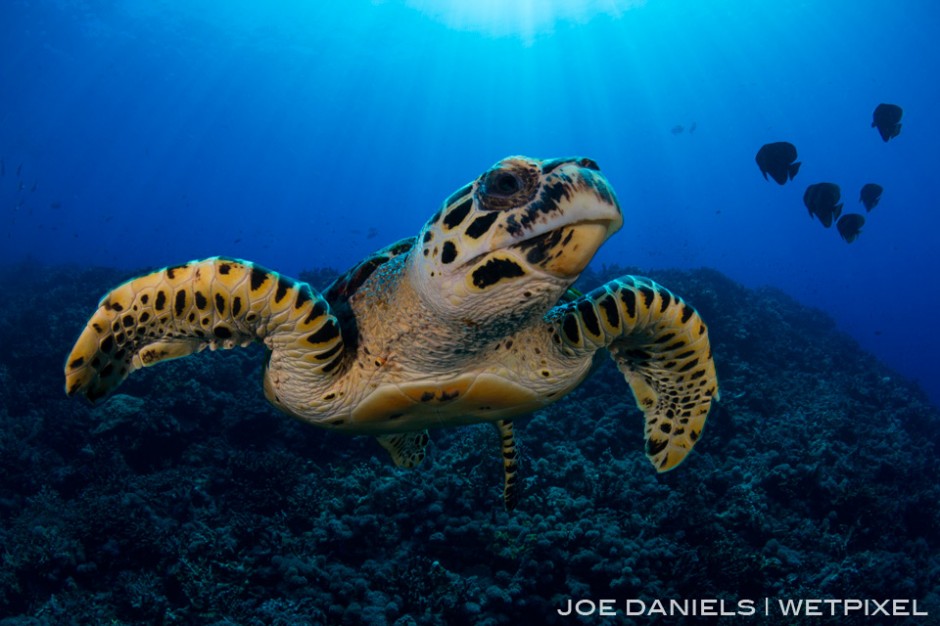
Many of the seamounts on Fathers Reefs are home to very friendly Hawksbill Turtles.
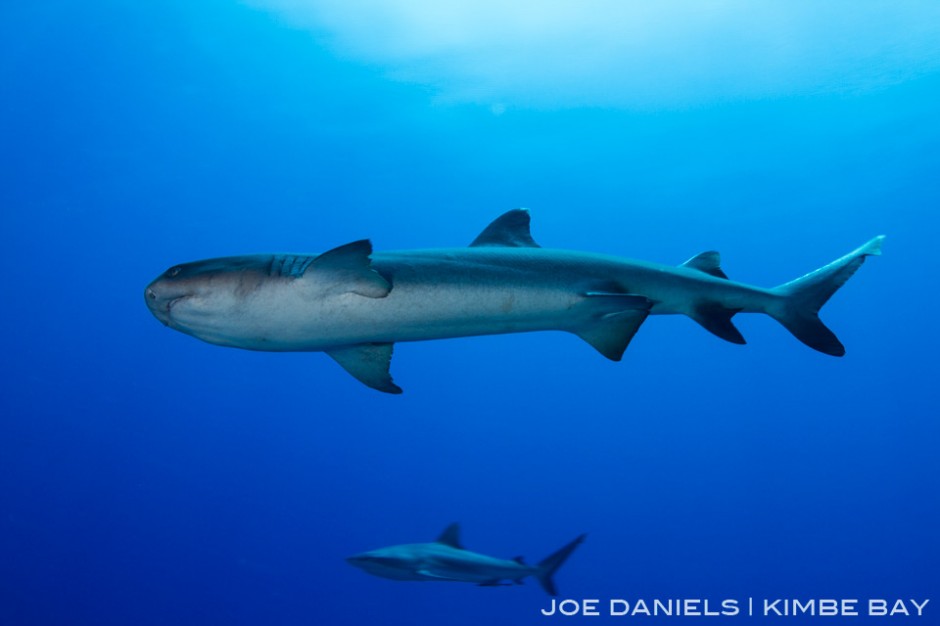
Due to low anthropogenic impacts Kimbe Bay still has healthy number of sharks. Here is a White Tip Reef Shark in the foreground and a Grey Reef Shark in the background.
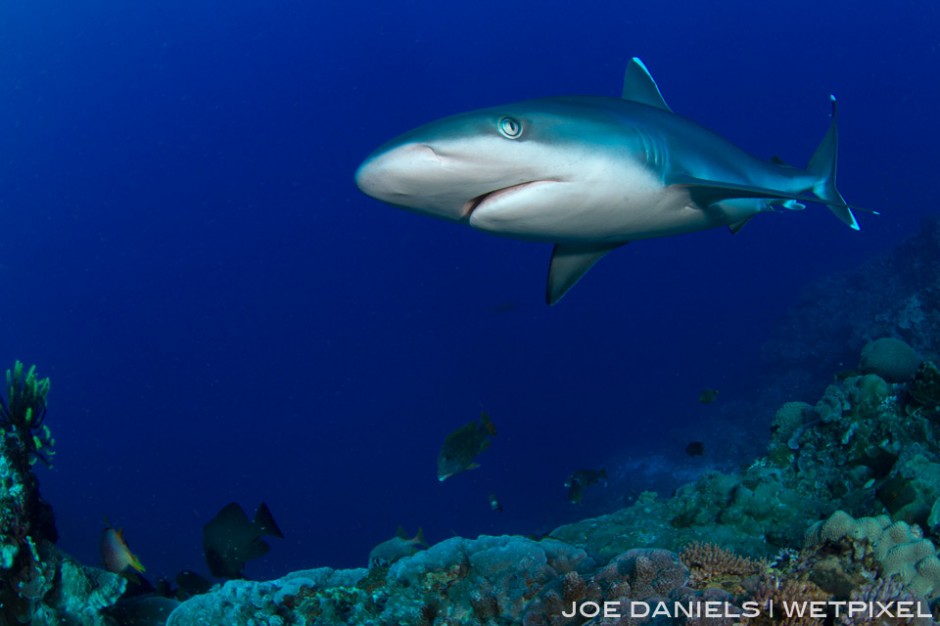
Silvertip Sharks are often seen cruising along the edges of the seamounts.
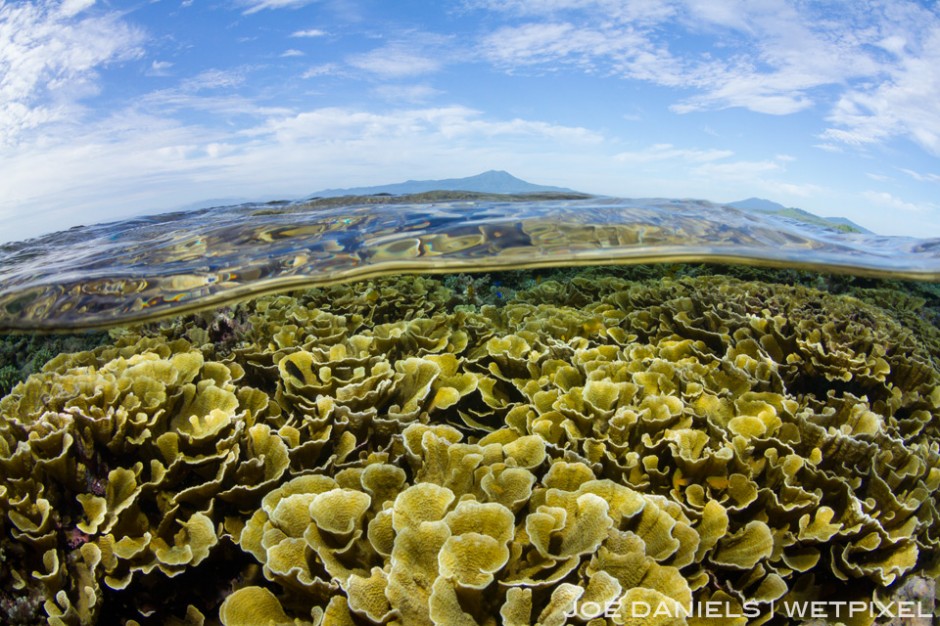
Most of the hard corals around Kimbe Bay are very healthy and diverse which is an icreasingly rare sight around the world.